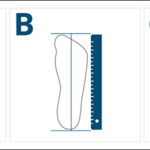High heels are a must-have item in any woman’s wardrobe, but choosing the wrong size can lead to painful feet. Let’s explore how to select the perfect-fitting high heels that will keep your feet happy.
1. How to Measure Your Feet for High Heels
What you’ll need:
- Pen
- Ruler
- White paper
Instructions:
Begin by placing a piece of white paper on the floor and stepping on it. Trace the outline of your foot with a pen.
Next, measure the length and width of your foot by drawing two parallel lines at the widest points of your foot.
If the length and width measurements result in odd numbers, you can round them up or down, as long as it’s not more than 0.3 cm down.
Tip: Opt for a size that is slightly larger rather than smaller to ensure comfort.
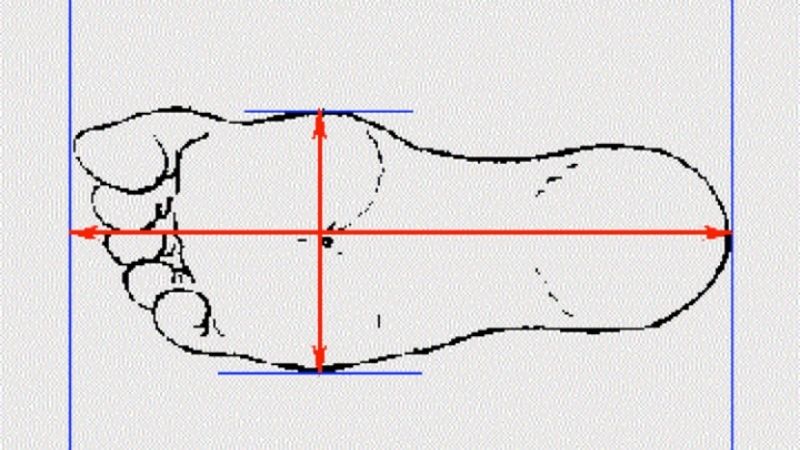 Determining Foot Size
Determining Foot Size
Once you have your foot length and width measurements, refer to the size chart below to find your corresponding US, UK, and VN/EU sizes.
| Size US | Size UK | Size VN/EU | Foot Length (cm) |
|---|---|---|---|
| 4 | 2 | 34 – 35 | 20.8 |
| 4.5 | 2.5 | 35 | 21.3 |
| 5 | 3 | 35 – 36 | 21.6 |
| 5.5 | 3.5 | 36 | 22.2 |
| 6 | 4 | 36 – 37 | 22.5 |
| 6.5 | 4.5 | 37 | 23 |
| 7 | 5 | 37 – 38 | 23.5 |
| 7.5 | 5.5 | 38 | 23.8 |
| 8 | 6 | 38 – 39 | 24.1 |
| 8.5 | 6.5 | 39 | 24.6 |
| 9 | 7 | 39 – 40 | 25.1 |
| 9.5 | 7.5 | 40 | 25.4 |
| 10 | 8 | 40 – 41 | 25.9 |
| 10.5 | 8.5 | 41 | 26.2 |
| 11 | 9 | 41 – 42 | 26.7 |
| 11.5 | 9.5 | 42 | 27.1 |
| 12 | 10 | 42 – 43 | 27.6 |
You can also calculate your shoe size based on foot length using this formula:
Shoe Size = Foot Length x 2 – 10 (cm)
 Determining Shoe Size Based on Foot Length
Determining Shoe Size Based on Foot Length
2. How to Choose High Heels That Fit Perfectly
Shop for High Heels in the Evening
 Shop for High Heels in the Evening
Shop for High Heels in the Evening
Our foot size can vary throughout the day, and they tend to be at their largest after a full day of activity. Therefore, to ensure the most comfortable fit, it’s best to shop for high heels in the evening.
Choose High Heels That Fit Snugly
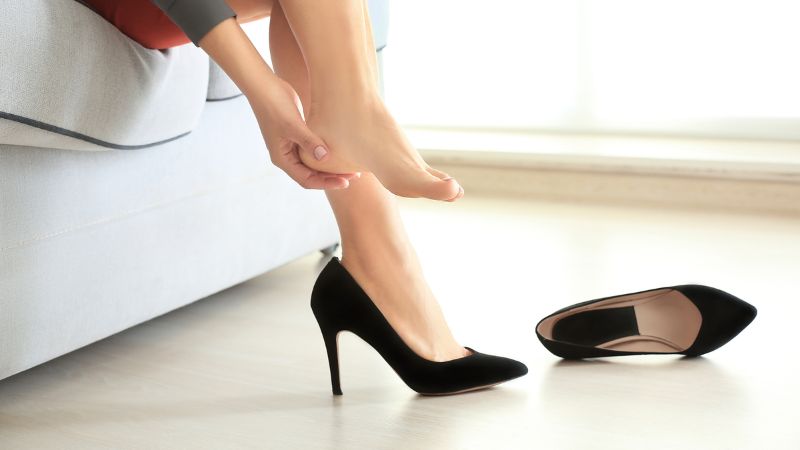 Choose High Heels That Fit Snugly
Choose High Heels That Fit Snugly
A well-fitting pair of high heels should be snug, providing stability for your feet. Avoid choosing shoes that are too tight or too loose, as this can lead to discomfort and instability. Wearing ill-fitting shoes can also make walking difficult and increase the risk of sprains, skin damage, or bleeding.
Pay Attention to the Toe Shape
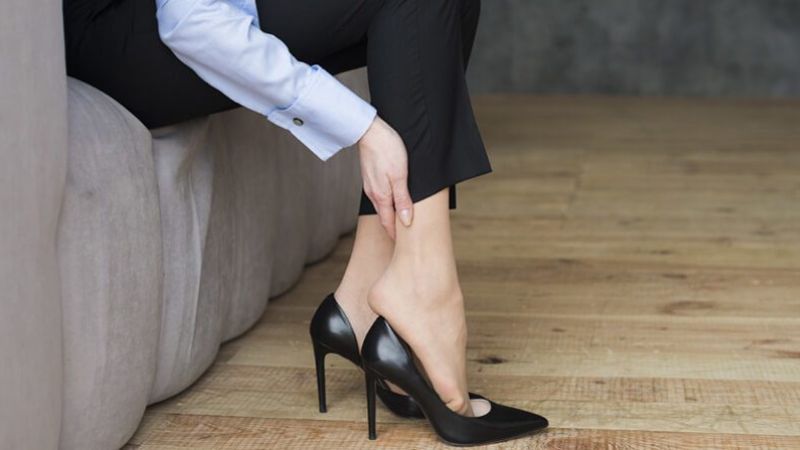 Consider the Toe Shape
Consider the Toe Shape
When it comes to finding the right size for high heels, it’s not just about the overall length and width; the toe shape matters too.
The perfect pair of shoes should have enough room for your toes and match the shape of your feet, ensuring comfort and preventing issues like joint pain with regular wear.
Here’s how to choose high heels based on your toe shape:
- Rounded or slightly pointed toes offer more room than sharply pointed toes. If you have larger feet or longer toes, opt for these styles.
- Low-cut or less coverage on the toes will provide less room than higher-cut or more covered styles. These are better suited for smaller feet or shorter toes.
- Choosing a toe shape that matches your foot shape ensures comfort and prevents unwanted issues when wearing high heels.
Try Them On and Walk Around
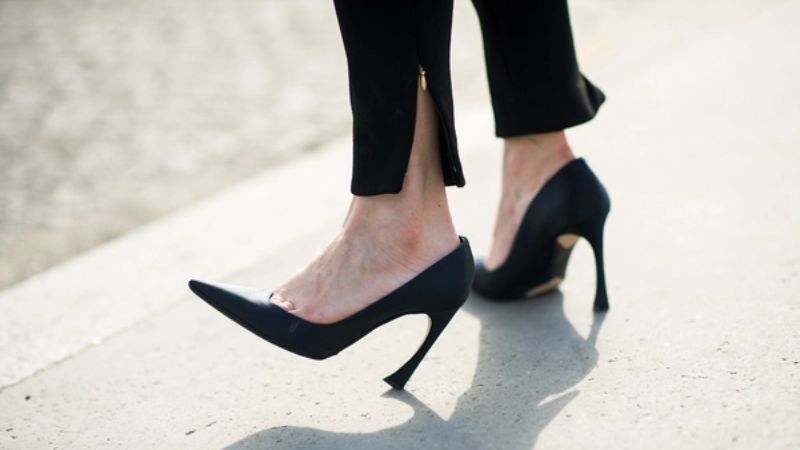 Try Them On and Walk Around
Try Them On and Walk Around
A common mistake when buying high heels is to make a decision based on how they feel when sitting or standing still. However, the feeling can be completely different when you’re walking.
For a more accurate assessment, try walking in the shoes for a while on different surfaces, including hard floors and carpets. This will help you find the most comfortable and suitable pair for your feet.
3. How to Choose High Heels That Are Easy to Walk In
Consider the Heel Height and Style
 Heel Height and Style Matter
Heel Height and Style Matter
The style of your high heels plays a crucial role in ensuring comfort and ease of use. Here are some tips to keep in mind:
- Opt for high heels with straps that secure the instep or ankle. This provides a sense of security and prevents your feet from slipping out while walking.
- Choose high heels that cover the toes or even boot-style heels that cover the ankles. This reduces pressure on the feet and makes walking easier, minimizing issues caused by excessive pressure. Selecting the right heel style will enhance your comfort and make wearing high heels a breeze.
Consider the Heel Type
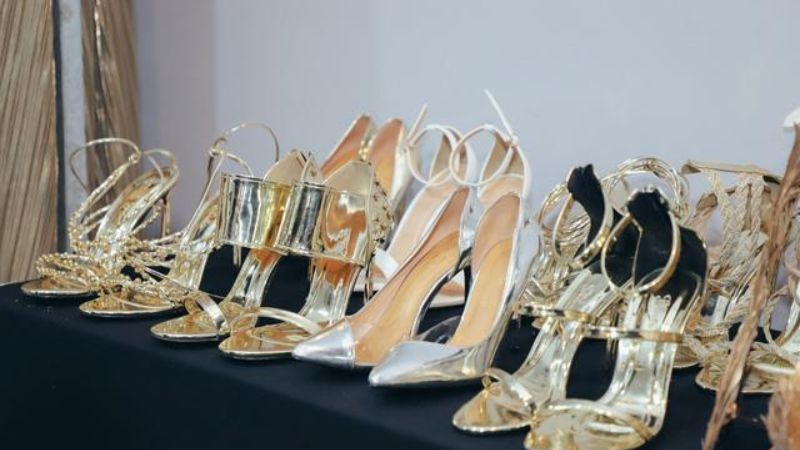 Heel Type Affects Comfort
Heel Type Affects Comfort
As heels get thinner and taller, the pressure on the front of your feet increases, making walking more challenging and potentially causing pain and other issues.
On the other hand, heels that are thicker, wider, and not too high distribute weight more evenly across your feet. The tendons and ligaments around your ankles can also move more freely. If you’re new to wearing high heels or want to minimize foot pain, opt for styles with more substantial heels, such as block heels or even wedge heels.
Positioning of the Heel
 Positioning of the Heel
Positioning of the Heel
In addition to the thickness and height of the heel, pay attention to its positioning. The heel should be placed directly under your heel, neither too far forward nor too far back, as this affects the support it provides to your body and the distribution of weight on your feet.
A recommended guideline is to maintain a distance of approximately 6 cm between the sole and the heel – considered a safe distance that maximizes stability when wearing high heels.
Choose the Right Toe Shape
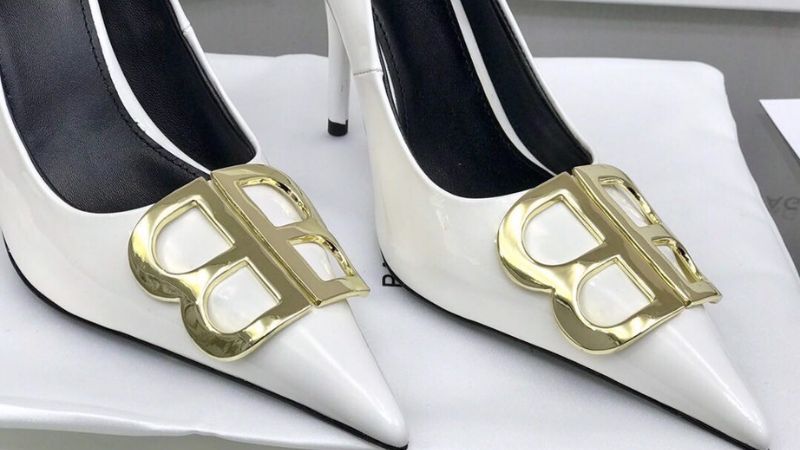 Choose a Comfortable Toe Shape
Choose a Comfortable Toe Shape
When selecting high heels to avoid foot pain, consider not only the correct size but also the toe design. Typically, pointed-toe shoes offer less space than squared-off, rounded, or squared-round toes. This can lead to more discomfort.
Therefore, invest in shoes with comfortable toe shapes to prevent any issues with your toes, especially when wearing higher heels.
Opt for a Lower Heel Height
High heels with a height of up to 4 cm are considered the most comfortable and least harmful for daily wear, as they reduce the load on the spine and do not significantly alter your bone structure. To find the ideal heel height for yourself, follow the instructions below.
Measurement Method 1:
7 Tips on How to Select the Perfect Summer Shoes to Keep Your Feet Protected
Are you looking to spruce up your wardrobe with summer shoes? Before making any decisions, it’s important to be cognizant of more than just the aesthetics and cost. Make sure you’re also paying attention to your foot health by avoiding the common mistakes that often come with shoe-shopping. Ði?n máy XANH has put together a list of the top 7 blunders to keep an eye out for – check it out!


























